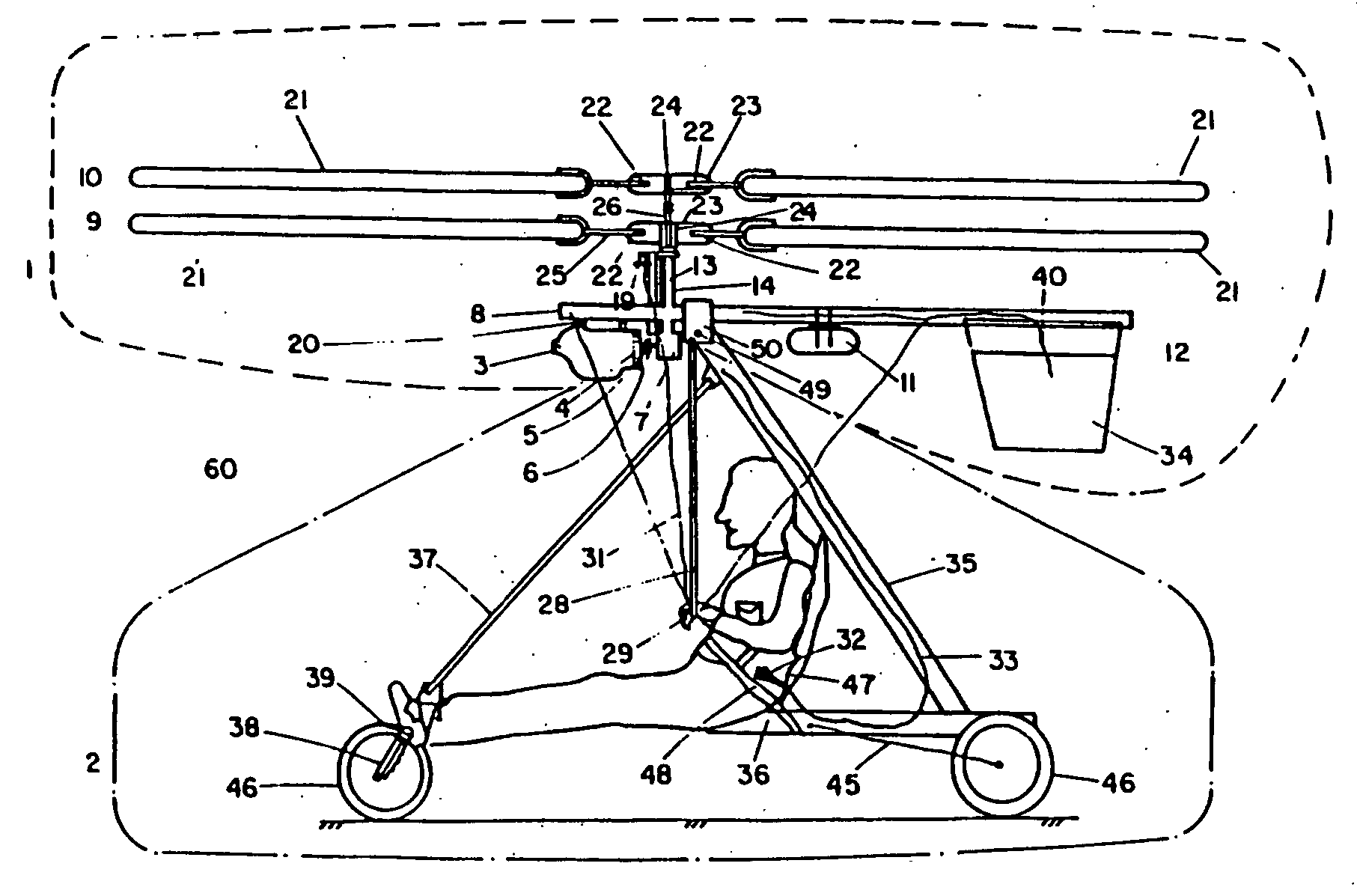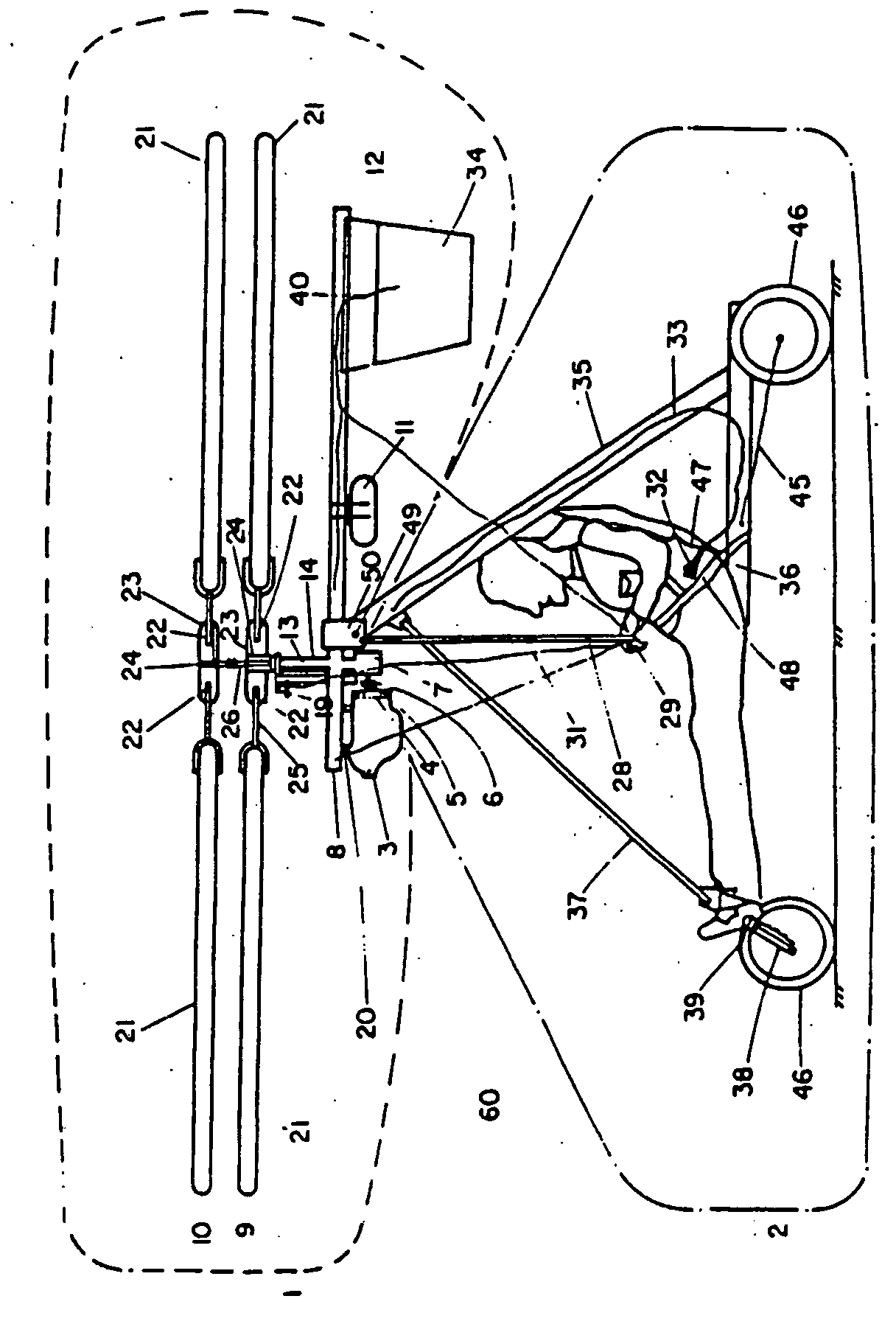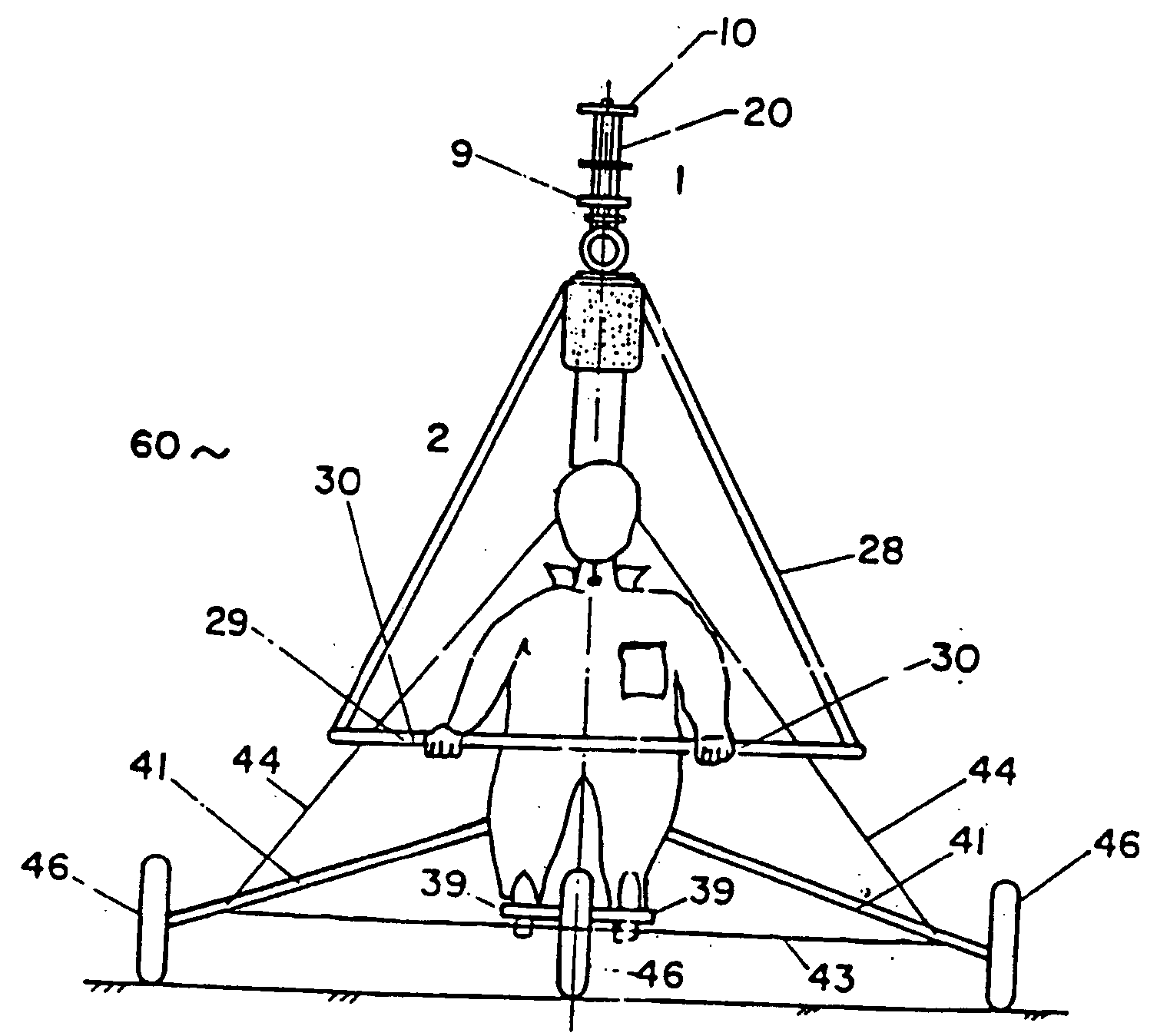Light weight helicopter
a helicopter and light-weight technology, applied in the field of light-weight helicopters, can solve the problems of increasing aerosports, difficult to learn to operate and fly safely, and expensive training in a 2-seater, and achieve the effect of simple flying and simplified construction
- Summary
- Abstract
- Description
- Claims
- Application Information
AI Technical Summary
Benefits of technology
Problems solved by technology
Method used
Image
Examples
Embodiment Construction
[0008] Accordingly, the present invention provides a lightweight helicopter of simplified construction, which is simple to fly and is appropriately termed as “helitrike”.
[0009] The detailed description of the helitrike is described hereunder with the help of the following drawings.
BRIEF DESCRIPTION OF THE ACCOMPANY DRAWINGS
[0010] The details of the helicopter of the present invention are shown in FIGS. 1-4 of the drawings accompanying this specification.
[0011]FIG. 1 shows the side view of helitrike.
[0012]FIG. 2 shows the front view of helitrike.
[0013]FIG. 3 shows a cross-sectional view of the secondary gearbox.
[0014]FIG. 4 shows a view of the suspension arrangement.
[0015]FIG. 5 is a plot of power loading and disk loading of some typical light helicopters.
[0016] Accordingly, the present invention provides a light weight helicopter which comprises: a rotary wing unit (1) consisting of an engine (3) with a primary gearbox (4) connected through flexible coupling (5) and sprag clu...
PUM
 Login to View More
Login to View More Abstract
Description
Claims
Application Information
 Login to View More
Login to View More - R&D
- Intellectual Property
- Life Sciences
- Materials
- Tech Scout
- Unparalleled Data Quality
- Higher Quality Content
- 60% Fewer Hallucinations
Browse by: Latest US Patents, China's latest patents, Technical Efficacy Thesaurus, Application Domain, Technology Topic, Popular Technical Reports.
© 2025 PatSnap. All rights reserved.Legal|Privacy policy|Modern Slavery Act Transparency Statement|Sitemap|About US| Contact US: help@patsnap.com



